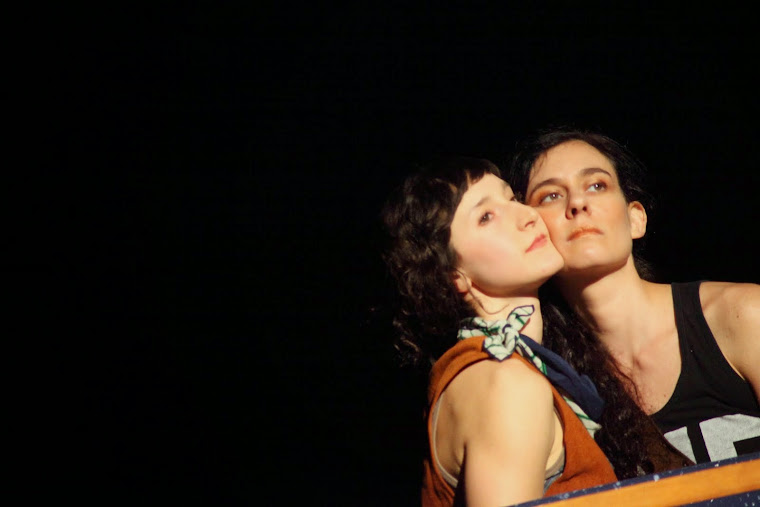by Rob Wright
When I think of Apocalypse — the word that is — I think of people waiting for the end of something corrupt; of a certain brand of Christians hoping for fire and destruction from which they will be lifted, miraculously, out of and transformed into lucent beings. Did this happen last night in the performance “The Dance Apocalypse?” Was something corrupt swept away by fire and sword? Well, not quite, but something transformative did happen.
The ambitions of the collaborators, Nicole Bindler and Gabrielle Revlock, were staggering. Their project entailed educating the audience in the mechanisms in human female ejaculation as well as the role of the tradition of dance in oppressing women. At one point an audience member asked “Is this the end of dance,” to which the collaborators after some hesitation answered “Yes.” Ironic? Possibly, but while “The Dance Apocalypse” may not be the end of dance, its critique of dance as a medium of polite entertainment was devastating.
Argument, between the collaborators as well as staged physical combat, were the motifs that ran through the performance. At one point, Nicole Bindler, after accusing Gabrielle of sucking up to funders locked herself in the sound booth after being thwarted from climbing onto the catwalk above the audience. An interesting frisson ran through the audience, and me, as to whether the performance had gone off script. Later, in a question and answer period, we — the audience — were assured that everything had been scripted, even though there was an amount of improvisation in some of the pieces. This exposure of the friction between collaborators, this opening up of the process of how art is made is… I almost said refreshing — no, it is engaging, risky and quirkily dramatic. Like the earlier diagrams showing the mechanics of the clitoris, the stripping away of the illusion of a smoothly executed performance was, for me, oddly disconcerting. It was like seeing paint-brush strokes in a painting magnified a thousandfold.
I’d be remiss to not mention that there was real dancing, and of a high quality, and drama — at one point Gabrielle wept with such sincerity that I was convinced she was really grieving. And at the very opening, Nicole did an improvised dance (I assume) to which Gabrielle gave a critique so full of polite cliches that I had to laugh, being guilty of the same sort of faint praise after watching the performances of friends.
The audience was also treated to a filmed trailer for an even more ambitious project: a “feature-length film” a movie, something to see in a theater called “Chicken Fight.” It was funny and outrageous by turns with more mock combat and descriptions of urinary-track infections. The couple beside me at this point had had enough and began packing their messenger bags. And the trailer was much of a piece with the performance as well as a previous performance called “I made this for you,” which began the collaboration between Bindler and Revlock being funny and disconcerting at once.
As an artist, I came away from the performance energized. The bravery of the performers as well as their confidence in their mission made me question what I was doing, not only as an artist, but as a member of a community, artistic and otherwise. Am I asking the right questions? Is an authentic self transparent in what I do? And the most telling question of all, am I being honest? Recently I read that W.H. Auden (an artist very different from Nicole and Gabrielle) disowned some very popular poems he had written because they were not “true” (his words). Do I have the courage to do that? These were questions that I had as my head hit the pillow.
